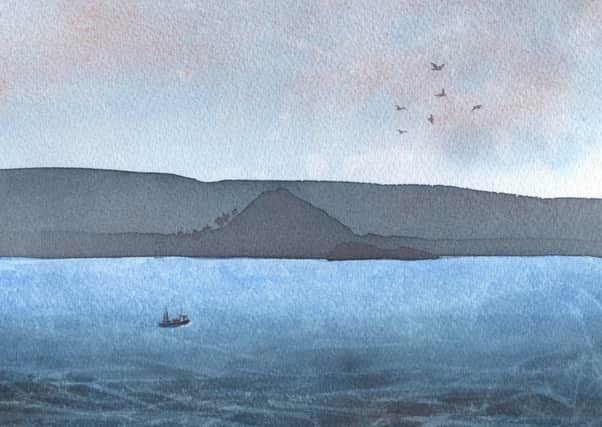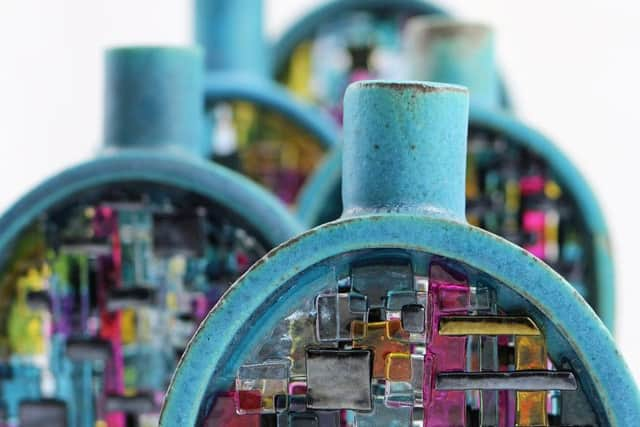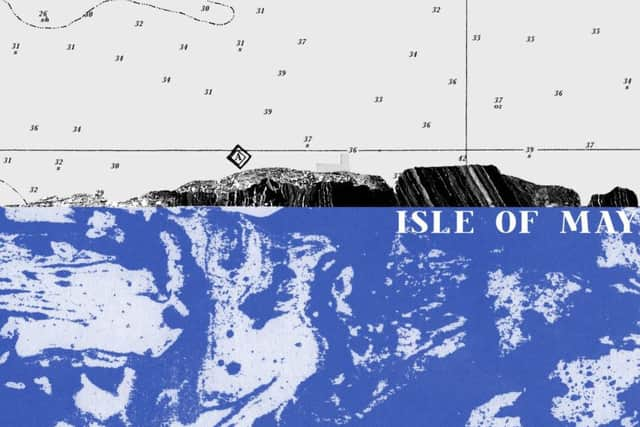Art review: The Pittenweem Arts Festival


Pittenweem Arts Festival, various venues, Pittenweem ****
While Edinburgh’s annual cultural behemoth packs out the capital across the Firth of Forth, the central striking aspect of Pittenweem’s fiesta is, similarly albeit proportionately, the sheer quantity of people thronging the picturesque East Neuk burgh to view all this multifarious creativity – up to 25,000 during the event’s nine-day span. And in many cases, too, not merely to view but to buy: even just a couple of days in, numerous shows’ exhibits were liberally sprinkled with red dots, on artworks priced into three figures. It’s a tricky one to tally up, but organisers’ conservative guesstimate of the total spend over the duration lies in the region of half a million pounds.
While the vast majority of exhibitors – numbering around 150, spread between over 100 venues – are self-selected, simply paying a registration fee to take part, and negotiating the use of locals’ homes, garages, sheds and other outbuildings as temporary galleries, each year’s programme features three invited artists, all established names in their field, and the up-and-coming winner of an annual festival bursary.


Advertisement
Hide AdAdvertisement
Hide AdThe main “headliner” for 2019 is arch photographic manipulator Calum Colvin, who has selected works from three different series created in the last ten years – Natural Magic, Camera Lucida and Jacobites by Name. They include a couple of his anaglyph red/cyan 3D pieces (with the requisite glasses supplied), and the reflected/inverted cyclorama Mirror Anamorphosis: Portrait of Charles Edward Stuart (after Liotard). Collectively the show offers a diverse and rewarding sampler of Colvin’s richly multi-layered visual concoctions, uniting elements of photography, painting, and installation to explore two- and three-dimensional space, replete with allusions to Scottish culture, art history, mortality and myth.
Also among the invitees is Danish-born Line Mortensen, whose mix of wall-mounted and freestanding pieces expand the parameters of mosaic technique in multiple directions. Aligning or contrasting materials such as recycled slate, Italian coloured glass, Scottish sea-glass, clay and gold leaf, in an array of minutely-constructed geometric and organic designs, some are locally inspired by boats and fishing-nets, while others comprise variations on her titular theme of Message in a Bottle, evoking the interaction – for good or ill – of the man-made and the natural.
Completing the invitation list, Edinburgh-based ceramic artist Lara Scobie unites clean-lined simplicity with hand-drawn intricacy in large and small asymmetric sculptural vessels, whose mostly monochrome outer surfaces are inscribed with patterns variously reminiscent of trees, runes, rock strata and the musical stave, offset by intense interior colours.
Given the festival’s coastal setting and large contingent of local artists, it’s hardly surprising that sea and shore loom large as theme or inspiration, as well as backdrop. Bursary winner Sophie Demery’s spaciously minimal, sometimes playful prints and artist booklets, however, put her own distinctive stamp on the subject, combining elements of landscape drawing, maps and graphic design with snippets of text to distil or conjure the sea’s visual, physical, folkloric and psychological dimensions.


Forgoing Edinburgh’s fleshpots this year in favour of Pittenweem – having moved here a couple of years back – Never Mind the Buzzcocks’ Phill Jupitus swaps his comedian hat for that of part-time visual artist, showing a liberal selection of new collages under the title Madmensheviks, comprising deft satirical juxtapositions of post-war promotional images from the US and USSR. Individual pieces are both ingeniously spliced and winningly humorous, while the unexpectedly complementing qualities of Soviet realism, Hollywood publicity and classic 1950s advertising offer an intriguingly fresh perspective on Cold War enmities. Jupitus’s artist spouse Jan Shelley, meanwhile, shows the fruits of her own invented printmaking method, using hand-carved and inked plaster-of-Paris rollers – which then end up as sculptural objets in themselves – to create large-scale designs of semi-abstracted plant forms, together with smaller digital prints, allied with bold use of colour.
Edinburgh’s Marianne Hazlewood recently won a top Gold award at the RHS Botanical Art and Photography Show, and it’s not hard to see why from her Pittenweem exhibition, centred on her exquisitely rendered pen-and-ink and watercolour studies of Arisaema, the cobra lily, tracing its life-cycle from tuber to seed pod, vividly conjuring its animal/reptilian qualities while attaining uncanny scientific precision. Ferns also feature prominently, from tightly furled shoots to full luxuriant foliage, while other pieces zero in on a single leaf or fruit, all framed by abundant white space, and all redolent of Hazlewood’s intense familiarity with her subject-matter, derived from rearing most of the plants herself.
Matching fantastical drollery with outstanding technical rigour, Reinhard Behrens’s epic labour-of-love Naboland, charting the imagined adventures of a toy submarine he found on the German coast in 1974, is an annual Pittenweem highlight. Paintings and drawings depict the craft amid settings that range from the Arctic to Arabia, the nearby foreshore to famous Renaissance masterworks, while a host of associated found objects feature in this year’s display of an explorer’s hut supposedly occupied by the crew, a half-scale Aladdin’s cave crammed with evocative ephemera, and evidencing a brilliantly singular mind at work. - Sue Wilson
Until 11 August